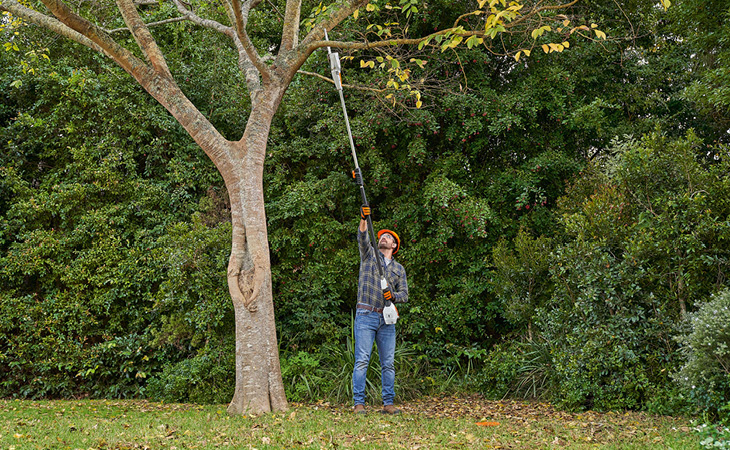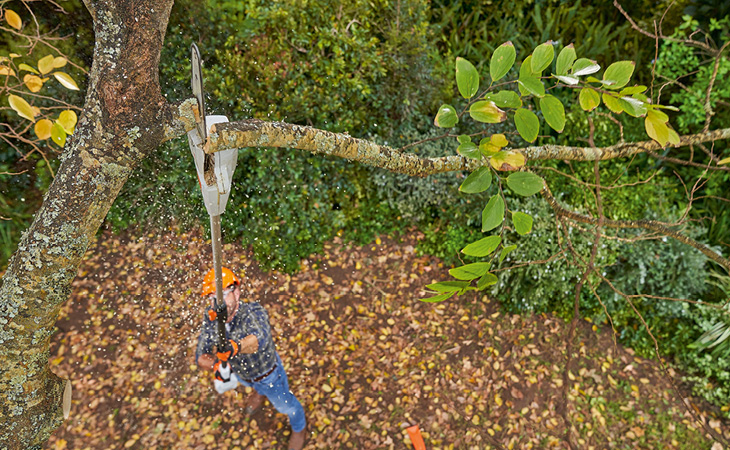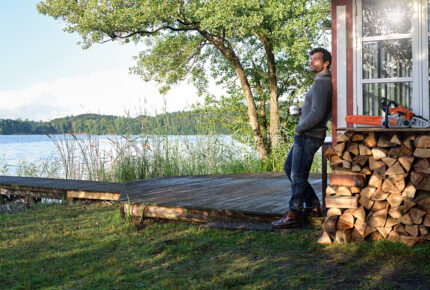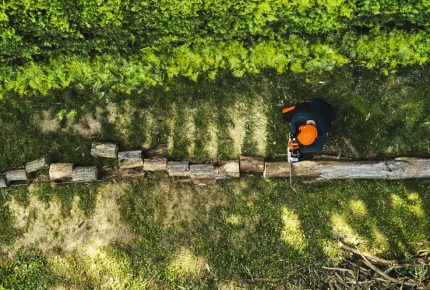
#How To
How To Maintain Healthy Trees
Why do we prune?
Much more than simply maintaining a tree’s attractive aesthetic appearance, pruning is essential to a tree’s health and growth cycle.
Promoting healthy leaf, root and limb growth, pruning enables the tree to direct its energy to the right places, and for nourishment to be diverted to new and growing areas.
Regular pruning also keeps trees less susceptible to pests, insects and diseases than poorly maintained trees.
Removing limbs affected by disease, fungi and decay prevents the onset and spread of disease to healthier branches, at the same time exposing the remaining branches to more sunlight and air circulation, both of which assist to reduce the incidence of disease.
Cutting branches that are crossed and rubbing together also minimises chances for disease by eliminating the opportunity for wounds to develop.
Pruning fruit trees of their diseased branches and limbs encourages more plentiful growth of the fruit and helps spurs grow, which also increases fruit production for the following year.
Another key reason to prune is the pro-active prevention of storm debris and damage by removing opportunities for limbs to fall onto homes, into yards or compromise power lines.
So now we know why it’s good to prune, let’s find out when the best time to prune is.
The best time to prune.
Late Winter is the best time to prune your trees.
At this time of year fresh wounds are only exposed for a short time before new growth begins, making it easier for wounds to heal quickly. The other advantage of pruning in Winter is that pruning dormant plants without leaf cover helps drive decisions around shaping and what branches need to be cut.
Early Spring is also a key pruning time, with the sudden burst of new growth encouraged by the onset of the milder weather and warmer soil temperatures requiring attention to ensure the growth remains positive for the health of the tree.
Pruning from mid-Spring to the end of Summer risks infection to the tree, while cutting during Autumn and early Winter can lead to limited growth the following Spring.
The best time in a tree’s life to begin pruning, is when it is young, as it is less stressful to the structure of the tree as opposed to when it is older.
How to prune: Making the cut
Before you begin pruning, being mindful around your personal safety, and the safety of others, surrounding structures and objects is paramount.
Always begin with the appropriate Personal Protective Equipment. Depending on the scope of your pruning adventure, protective helmets, visors, safety-glasses, gloves, ear-muffs and boots are all necessary considerations. A comprehensive range of quality STIHL PPE can be seen here.
When planning your pruning for each tree, the first step is to identify which limbs to remove, including any crossing or competing limbs.
It’s important to trim and cut branches that are parallel to allow more sunlight into the tree structure and enable the tree to grow better. Additionally, this helps to not impede the growth of other branches.
As a rule of thumb, if your feet need to leave the ground to reach the limbs you need to cut, then it’s time to bring the pole pruner out!
Before cutting it’s very important to make sure there are no people in the area, and that the drop zone is clear.
Once you’ve done that, start up your pruner.
- When pruning, it is crucial that the limb being cut doesn’t splinter or tear due to the forces being applied. Tearing of the limb risks introducing disease and rot to the tree.
- For this reason when tackling limbs of a thicker diameter, it’s best to employ a simple 3-cut trimming method.
- Using your pruner at a 45 degree angle, make your first undercut 25-30cm further out on the limb from where you want your final cut to be made.
- The undercut should be made to a depth of about a quarter of the limb’s diameter.
- The second cut, also made with the pruner at 45 degrees, should be about 5cm further in from the first cut towards the tree’s collar, and go from the top of the limb all the way through.
- Finally, make your last cut just outside the limb’s collar from the top straight through the entire limb. This should also be done holding the trimmer at 45 degrees.
It’s that simple to make a clean cut!
Tools to keep your trees healthy
To make pruning as easy and effective as possible, you need the right tools.
Engineered specifically for use in the home garden on trees of all types, the STIHL GTA 26 Battery Garden Pruner provides gardeners with the perfect blend of performance, usability and safety.
Compact and lightweight, the perfectly balanced GTA 26 enables gardeners to trim with power and precision, while its manoeuvrability makes it easy to get in and trim areas normally difficult to get to.
Powered by a lithium-ion battery for long cutting time and outstanding performance, the GTA 26 uses a genuine STIHL ¼” PM3 saw chain for powerful cuts, and with its high chain speed facilitating rapid, clean cuts.
Engineered for easy handling, non-slip control handles promote ergonomic, two-handed operation, while the quiet battery operation means no ear-protection is required when trimming. Both features combine to eliminate operator fatigue and make pruning easier.
To tackle those limbs and branches that are above shoulder level, STIHL has created the ingenious HTA range of Battery Pole Pruners. Across three varying sizes of length and power, the HTA 66, HTA 86 and HTA 135 redefine what is possible to prune from the safety of ground-level.
Using an innovative telescopic extension system, the HTA pole pruners enable gardeners to trim out of reach branches with ease and precision, with limbs up to a height of approximately 5 metres being easily managed.
The easy-to-adjust, sturdy professional telescopic system doesn’t flex, delivering more control and precision to the user, while keeping your two feet planted safely on the ground.
Lightweight, quiet and very powerful with an amazing amount of torque, from smaller diameter limbs that can be removed with the one cut to thick branches requiring the 3-cut process outlined earlier in this article, STIHL battery pole pruners cut through the most sizeable of limbs like butter.
For more heavy-duty limb-cutting, including felling and processing, the STIHL MS 170 MiniBossTM petrol chainsaw is a perfect addition to any home-gardeners kit.
The ideal first chainsaw, this robust, lightweight, manoeuvrable and reliable entry-level chainsaw delivers plenty of cutting power, making it the perfect tree maintenance partner for those with larger yards or surrounding blocks.
Fitted with the STIHL anti-vibration system for comfortable use, it also has a low emission, economical STIHL 2-MIX engine, and comes packed with user-friendly safety features.
Producing amazing torque and power yet little vibration, it requires little effort to cut through the thickest of wood, making for a rewarding job.
To find out more about these and other STIHL high-performance garden power tool products that will make your tree maintenance time both easy and rewarding, click here to find your nearest STIHL dealer.









